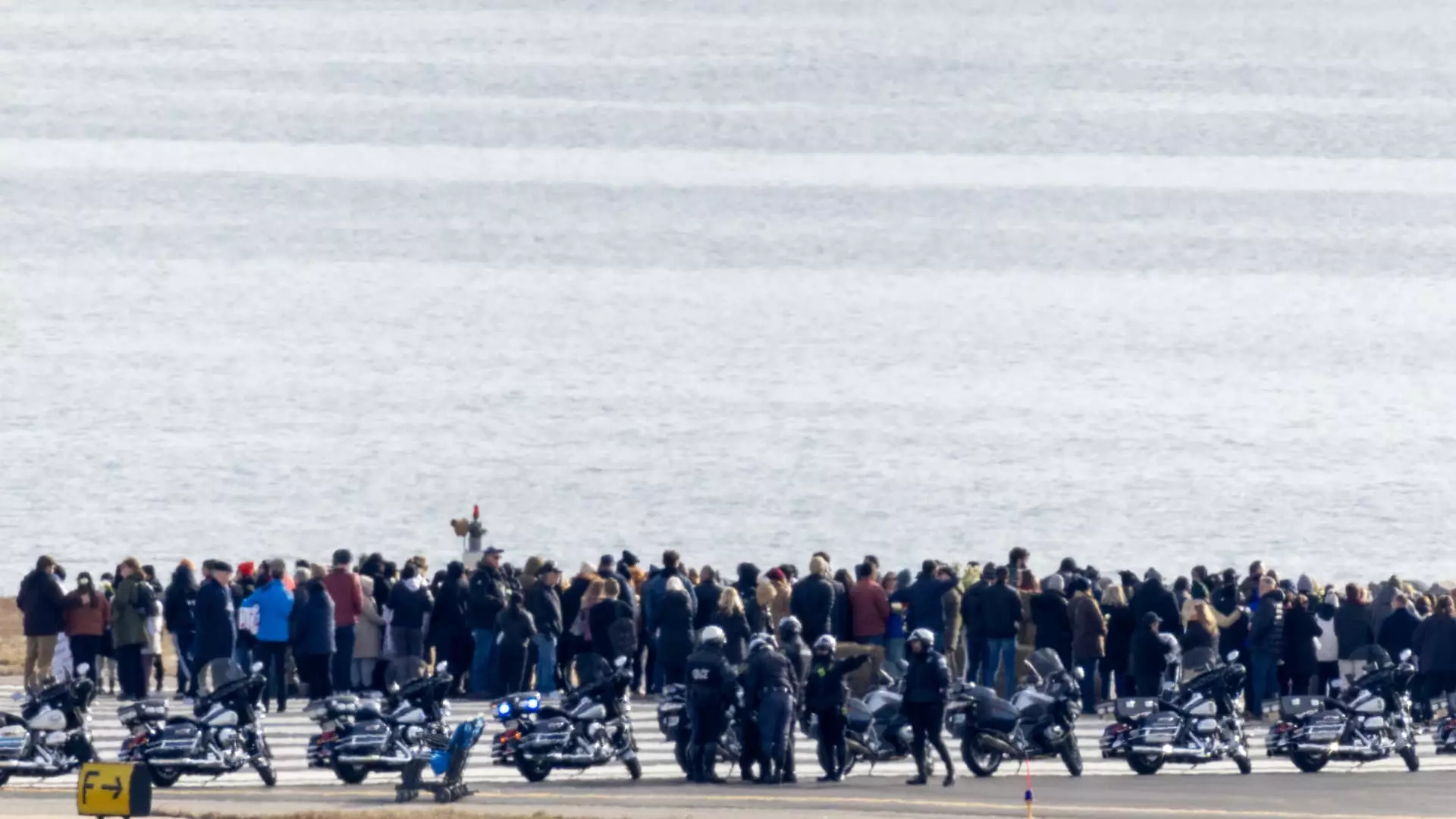On a tragic Wednesday, the skies above the Potomac River turned dark as an American Airlines regional jet, operating as Flight 5342, collided with an Army Black Hawk helicopter. This catastrophic event resulted in the loss of 67 lives, with 64 fatalities aboard the airplane and three military personnel on the helicopter. This incident marks the deadliest air crash in the United States since 2001, a somber reminder of the risks associated with aviation transport and military training operations close to densely populated regions.
In the ensuing days, recovery teams worked tirelessly to retrieve the wreckage from the river. Officials confirmed they had recovered all the remains of the victims, with 66 individuals identified by the D.C. Fire and EMS department. The full spectrum of the tragedy was further emphasized by the NTSB’s ongoing investigation into the collision’s causes, with particular focus on understanding the movements of both aircraft before the crash. Insight from the air traffic control tower indicated that the Black Hawk helicopter was flying at approximately 300 feet, exceeding the authorized altitude for helicopters in that airspace, which is capped at 200 feet under FAA regulations.
The thorough investigation process involves interviewing the air traffic control personnel on duty during the incident, alongside the recovery of crucial data recorders from both the Bombardier CRJ-700 passenger jet and the Black Hawk helicopter. As investigators sift through cockpit voice recordings and flight data, the gravity of the situation becomes more apparent, raising numerous questions about both the operational procedures and decisions made leading up to the crash.
In light of this disastrous collision, the FAA responded by imposing restrictions on helicopter flights around the area near Reagan National Airport. These measures reflect heightened concerns about air traffic safety and the need for regulatory adjustments to prevent similar tragedies. The region’s airspace is crucial for both civilian and military flights, and the challenge lies in balancing these operations effectively whilst ensuring safety protocols are adhered to stringently.
In the aftermath of the tragedy, American Airlines has demonstrated a compassionate response to both the victims’ families and the broader community affected. The airline’s CEO, Robert Isom, communicated with employees to express condolences and announced plans for a moment of silence as a mark of respect near the one-week anniversary of the crash. This emphasis on human connection and support highlights the airline’s commitment to grieving families and personnel affected by the incident.
American Airlines has mobilized its CARE Team, a group primarily composed of volunteers trained to assist in emergency situations, to cater to the needs of the bereaved families. This initiative embodies a proactive and empathetic approach in providing comprehensive assistance, including logistical support, personal care arrangements, and emotional aid, showcasing the airline’s dedication to its community during a profoundly challenging time.
This tragic episode underscores the complexities surrounding aviation safety, particularly within the often congested airspace near major urban centers. As investigators continue to dissect the events leading up to the collision, the importance of stringent operational protocols and regular safety assessments becomes ever more evident. Moving forward, the entire aviation industry must prioritize not only technological advancements in air traffic control but also the human factors that play a pivotal role in ensuring the safety of all those who take to the skies. Collectively, this moment in history serves as a sobering reminder of the vital importance of coordination between civilian and military aviation operations, and the need for continued vigilance to safeguard against future tragedies.


Leave a Reply